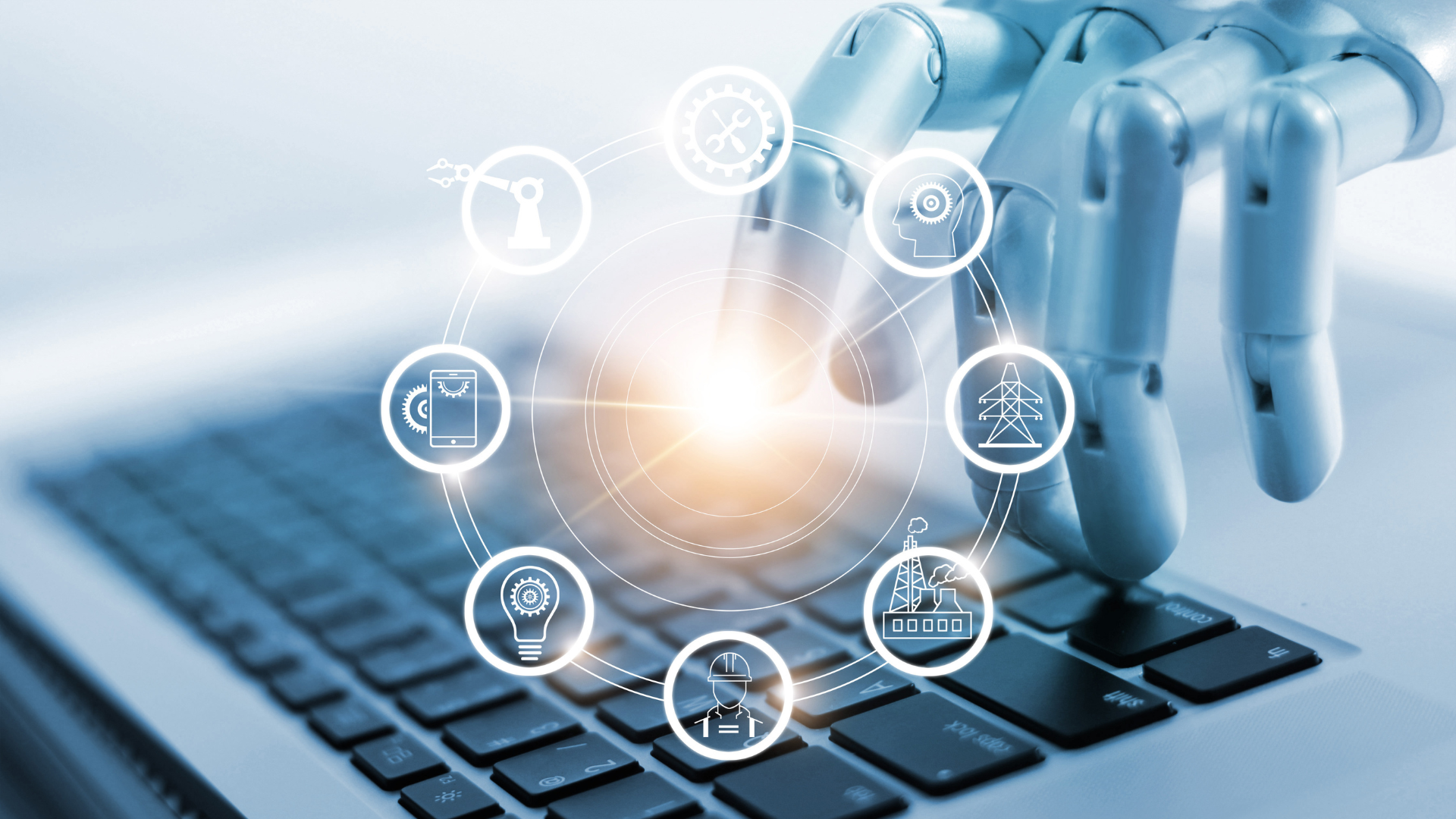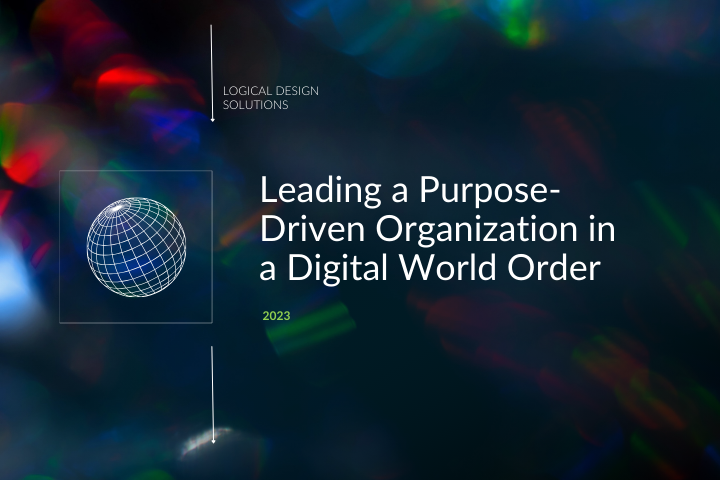8 min read
Algorithmic Management: The Demise of the Industrial Era Workplace
Sarah is a 28-year-old financial analyst at a global consulting firm in New York. Her office is modern, her role intellectually demanding, and her...
4 min read
Logical Design Solutions
:
8/22/23 4:27 PM
The economist Tyler Cowen draws an analogy between certain events occurring today – what some are calling The Great Reset - and how miners used to take canaries with them to provide an alarm when levels of toxic gases were too high. He asks whether business leaders are also paying attention to the warning signs around them in this age of AI.
According to Klaus Schwab, the executive chairman of the World Economic Forum, “Today we face the task of understanding and governing 21st-century technologies with a 20th-century mindset and 19th-century institutions.”
Regardless of whether we view this as the Fourth Industrial Revolution, a third major tipping point, or a Great Reset, it is hard to argue against the idea that structural change in our institutions is inevitable.
In order to survive and flourish, leaders will need an agile mindset to systematically innovate, so that their organizations can harness the full potential of the digital infrastructures evolving around them.
Three important principles to keep in mind when thinking about how to define a leadership mindset in the modern era are systems, not technologies; empowering, not determining; and working by design, not by default.
The conundrum here is whether we will be able to truly understand how technologies are transforming the systems we need to run our business without attempting to gain a deep understanding of the different technologies themselves. At the very least, we need a minimum viable understanding of emerging technologies. We also need to explore trends and linkages across these technologies to understand how they relate to one another and will cumulatively impact our organizational systems.
If we as leaders zoom out – as John Hagel, the former leader of the Deloitte Center for the Edge, would suggest – we find ourselves asking questions like ‘What will my relevant market look like in a decade from now? What kind of systems will I need to have to thrive in that market or arena?’ Only then can we consider the technologies that may support those systems.
At the same time, we must zoom in to identify two or three short-term projects that will have the greatest impact in accelerating the organization’s movement toward the longer-term opportunities already identified. These would be accompanied by considerations of technological implementation, resource allocation, and relative measures of success in attaining the desired end state.
When we connect the dots between these two approaches, we see that emerging technologies must rely upon and extend digital systems, scale readily due to a foundation of digital interoperability, inhabit physical objects, combine in surprising and disruptive ways, and create similar benefits and challenges.
Fourth Industrial Revolution technologies promise to disrupt even today’s systems and create entirely new sources of value, turning the breakthroughs in digital technologies that organizations are struggling to make sense of today into the core infrastructure that business models will take for granted tomorrow.
The philosopher John Armstrong points out that "When we look at the past, we can see many, many world-changing things were possible at the time, which people did not realize. We know this. What we forget to tell ourselves is that this must be true for us in the present as well."
The organization of the future will be unlike anything the business world has seen previously. The era of functional siloes, matrix structures, and bureaucracy has come to the end of its life cycle.
New forms of institutional innovation will pave the way for a new leadership mindset that heralds unprecedented change and guides the workforce towards opportunities to flourish even as technological advances drive seismic shifts across all organizations. At its heart, this movement is about empowering people, rather than the rise of machines.
We must design systems that harness new technologies to give our workers more autonomy and control over their everyday tasks. As Klaus Schwab explains, shaping the Fourth Industrial Revolution to ensure that it is empowering and human-centered, rather than divisive and dehumanizing, is not a facile task. By empowering their subordinates, leaders are also more likely to be trusted and be more effective at influencing performance.
Culture exists in an organization either by design or by default, so why not design it intentionally based on how we want our organization to work? The challenge here is for leaders to create a culture that encourages workers to focus on what is essential. Thinking like a startup, putting purpose first, creating a mutual understanding of the company's mission and vision, living your company values, and even thinking critically about an employee’s first day in the company are all part of the leadership mindset.
We must design systems that harness new technologies to give our workers more autonomy and control over their everyday tasks. Ensuring that the Fourth Industrial Revolution is empowering and human-centered, rather than the converse, is not a task to be taken lightly. By empowering subordinates, business leaders are also more likely to engender trust while being effective at influencing performance.
As technology changes the way we work and cultural norms undergo seismic shifts, we have the opportunity to adjust the way we think about leadership by opening new avenues of both human and machine potential. By adapting to shifting sources of value, we will inspire purposeful learning, engagement, and empowerment throughout the workforce.
Leadership in the age of AI also means demonstrating to the workforce what ‘good’ looks like in the digital world. For example, digital transformation must be a CEO-driven business strategy and operating model that is focused on transforming organizationally, operationally, and behaviorally. This in turn creates value through technology-enabled productivity and innovation while at the same time supporting the new digital business environment.
The leadership mindset embraces vulnerability while creating an atmosphere of psychological safety for workers. Contemporary business leaders must become inclusive orchestrators and learn to constantly deal with complexity and ambiguity.
Finally, a leadership mindset is a must-have catalyst for realizing organizational and human adaptation. Leaders will inspire the workforce to embrace inevitable cultural changes by empowering individuals and teams to cultivate growth potential. They’ll support a dynamic, self-directed learning environment that includes a clear mandate to upskill the workforce and create organizational capabilities that are aligned to both quantum leaps in technological capabilities and the irreplaceable value of human ingenuity and creativity.

8 min read
Sarah is a 28-year-old financial analyst at a global consulting firm in New York. Her office is modern, her role intellectually demanding, and her...

Our Leading a Purpose-Driven Organization in a Digital World Order white paper explores the pressing challenges confronting business leaders during...
.png)
3 min read
On July 18 of this year, OpenAI filed a trademark for GPT 5, a release that will be eagerly awaited because of anticipated power gains, more factual...